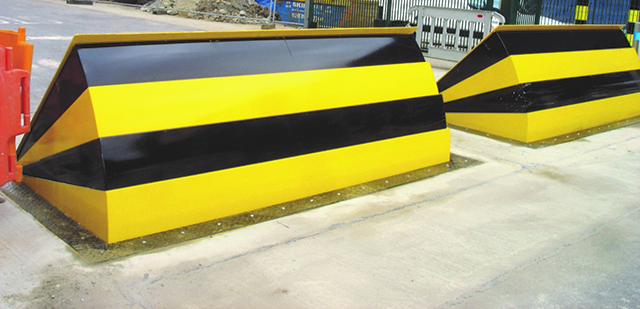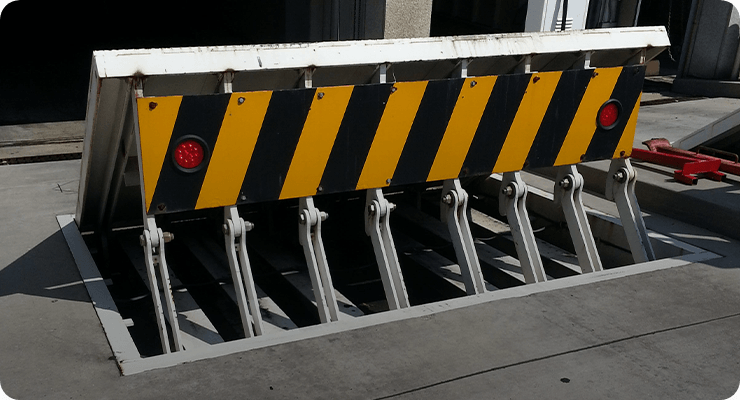The 5-Second Trick For Wedge Barriers
What Does Wedge Barriers Mean?
Table of ContentsThe Of Wedge BarriersGet This Report on Wedge Barriers

The Basic Principles Of Wedge Barriers
The continuing to be force used to
the cam camera deploy the wedge plate 16 may might provided supplied an electromechanical actuator 84 or other various other. The springtime assembly 54 and the actuator 84(e. Wedge Barriers. g., electromechanical actuator)might run with each other to equate the camera and raise the wedge plate 16.
As pointed out over, the spring setting up 54 puts in a continuous force on the web cam, while the electromechanical actuator might be managed to put in a variable pressure on the web cam, therefore making it possible for the lifting and decreasing( i. e., deploying and retracting )of the wedge plate 16. In certain embodiments, the consistent force applied by the springtime setting up 54 may be adjustable. g., electromechanical actuator) is handicapped. As will be appreciated, the spring assembly 54 may be covered and shielded from particles or various other elements by a cover plate(e. g., cover plate 68 displayed in FIG. 4) that might be significantly flush with the elevated surface 38 of the structure 14. As discussed over, in the deployed setting, the wedge plate 16 serves to obstruct access or traveling beyond the obstacle 10. The obstacle 10(e. g., the wedge plate 16 )may block pedestrians or lorries from accessing a home or path. As talked about over, the barrier 10 is affixed to the anchor 30 safeguarded within the structure 14,

front braces 71. Therefore, the linkage settings up 72 might pivot and rotate to make it possible for the collapse and expansion of the linkage assemblies 72 throughout retraction and release of the bather 10. The linkage settings up 72 reason movement of the wedge plate 16 to be restricted. If a car is traveling towards the deployed wedge plate 16(e. For instance, in one scenario, the security legs 86 might be extended duringmaintenance of the barrier 10. When the security legs 86 are deployed, the safety and security legs 86 support the weight of the wedge plate 16 against the surface area 12. Consequently, the training device 50 may be shut down, serviced, removed, replaced, etc. FIG. 5 is partial perspective view of a personification of the surface-mounted wedge-style barrier 10, highlighting the web cam 80 and the camera surfaces 82 of the lifting device 50. Specifically, 2 web cam surface areas 82, which are referred to as Home Page lower cam surfaces 83, are positioned below the cam 80. The reduced cam surface areas 83 might be taken care of to the surface 12 (e. For example, the reduced web cam surface navigate to this website areas 83 and the placing plate 85 might create a single piece that is secured to the support 30 by screws or other mechanical fasteners. Additionally, two webcam surfaces 82, which are referred to as upper camera surface areas 87, are placed over the camera 80 and paired to (e. In various other personifications, stepping in layers or plates may be positioned in between the surface area 12 and the lower webcam surfaces 83 and/or the wedge plate 16 and the top cam surfaces 87 As stated above, the web cam
80 converts along the webcam surface areas 82 when the wedge plate 16 is raised from the retracted setting to the released placement. Furthermore, as pointed out over, the spring assembly 54 (see FIG. 3 )might offer a pressure acting on the camera 80 in the direction 102 using springtime pole 58, which might reduce the force the electromechanical actuator 84 is required to put on the webcam 80 in order to activate and raise the wedge plate 16. 1 )to the released position(see FIG. 4). As shown, the webcam 80 consists of track wheels 104(e. g., rollers), which contact and equate along the web cam surfaces 82 during procedure.